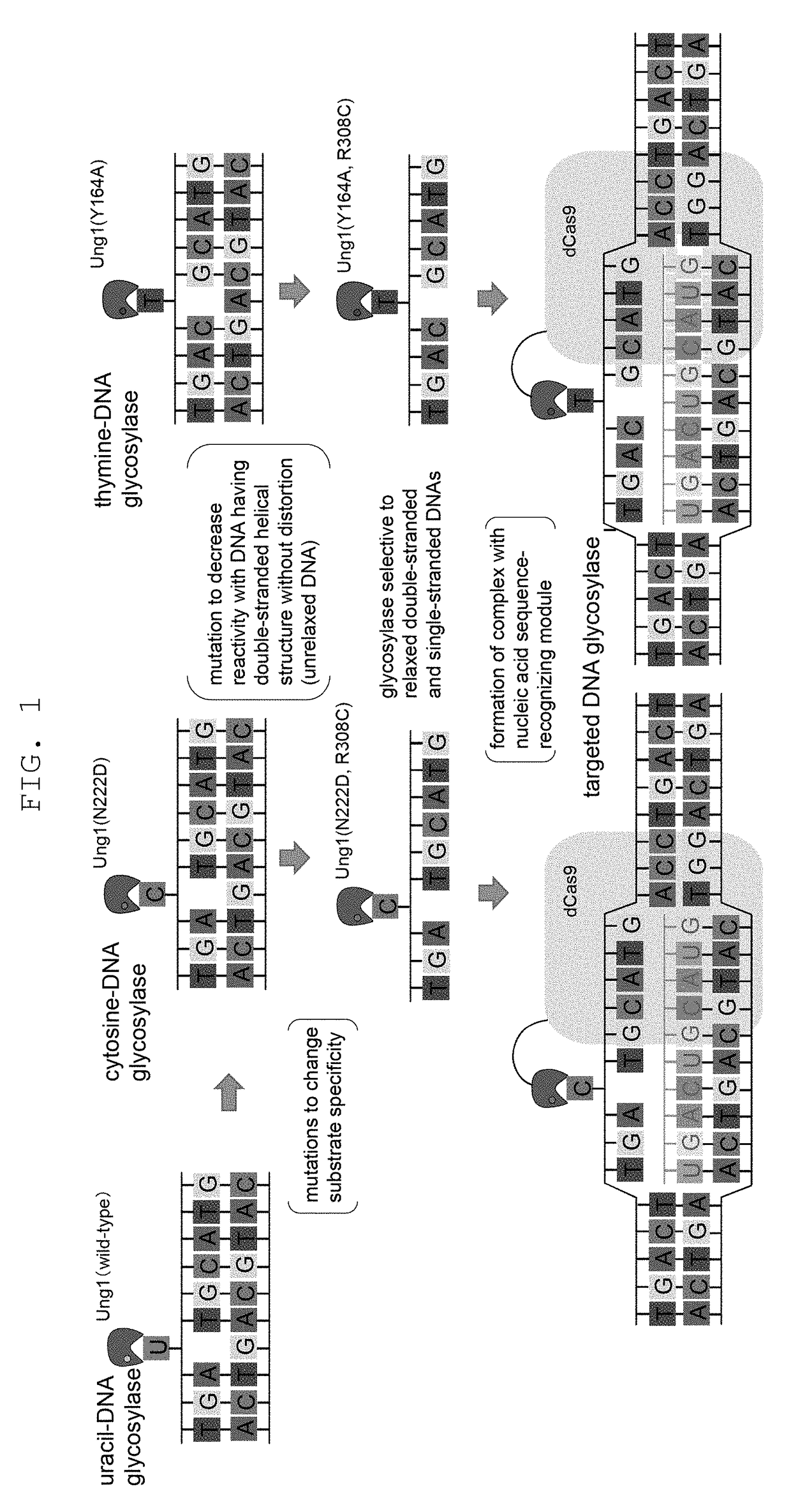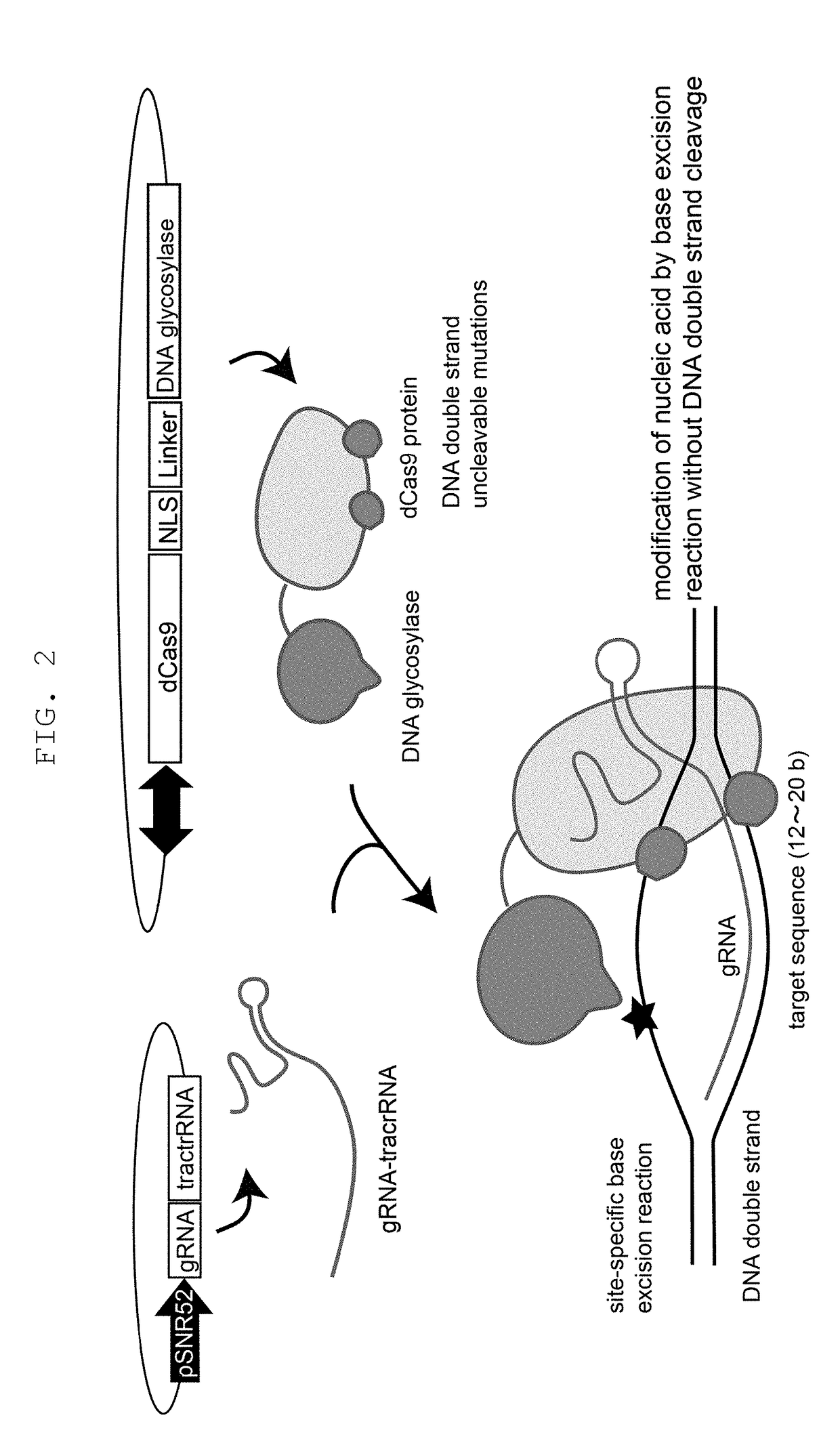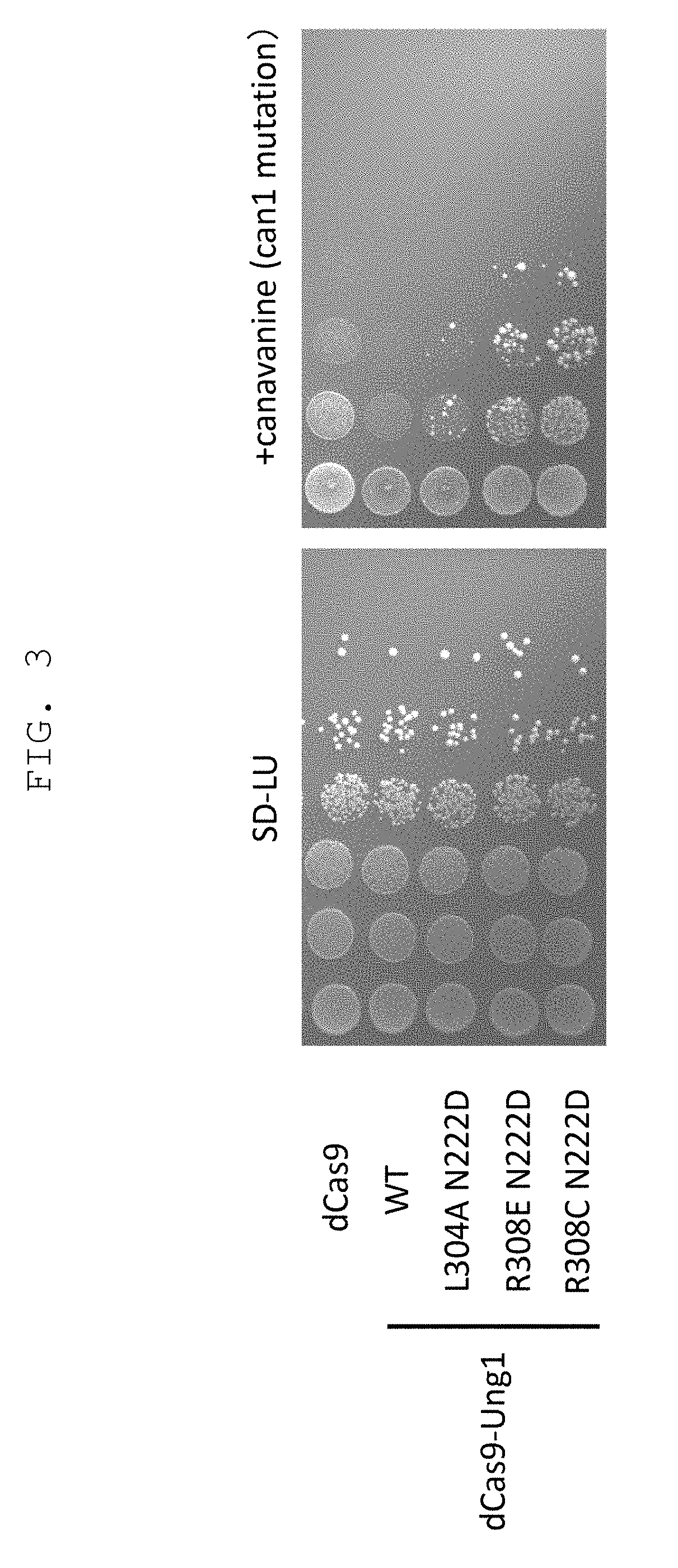Method for modifying genome sequence to introduce specific mutation to targeted DNA sequence by base-removal reaction, and molecular complex used therein
a technology of dna sequence and genome sequence, which is applied in the field of genome sequence modification, can solve the problems of low ability to remove a base from normal bases, difficulty in genetic modification, and low reliability, and achieves superior safety
- Summary
- Abstract
- Description
- Claims
- Application Information
AI Technical Summary
Benefits of technology
Problems solved by technology
Method used
Image
Examples
example 1
Modification of Genome Sequence by Linking DNA Sequence Recognition Ability of CRISPR-Cas to Mutant Uracil-DNA Glycosylase (1)
[0176]To test the effect of genome sequence modification technique of the present invention by utilizing mutant uracil-DNA glycosylase and CRISPR-Cas nucleic acid sequence recognition ability, introduction of mutation into CAN1 gene encoding canavanine transporter that acquire canavanine-resistance due to gene deficiency was tried. As gRNA, a sequence complementary to 793-812 of CAN1 gene ORF and a sequence complementary to 767-786 complementary strand sequence were used, a chimeric RNA expression vector obtained by linking thereto Streptococcus pyogenes-derived tracrRNA, and a vector expressing a protein obtained by fusing dCas9 with impaired nuclease activity by introducing mutations (D10A and H840A) into Streptococcus pyogenes-derived Cas9 (SpCas9), and wild-type yeast-derived UNG1 or yeast-derived UNG1 introduced with various mutations (N222D single mutat...
example 2
Modification of Genome Sequence by Linking DNA Sequence Recognition Ability of CRISPR-Cas to Mutant Uracil-DNA Glycosylase (2)
[0177]Using yeast UNG1 introduced with double mutation of R308C mutation that decreases reactivity with a DNA having an unrelaxed double helix structure, and N222D mutation imparting CDG activity, or Y164A or Y164G mutation imparting TDG activity, and by a method similar to that in Example 1, introduction of mutation into CAN1 gene was tried. The results are shown in FIG. 4. It was shown that R3080 N222D can achieve efficiency of mutation induction comparable to that of deaminase PmCDA1, and mutant strain can be obtained even without selection. It was shown that thymine base could be edited, since canavanine-resistant colony was also obtained in R3080 Y164A. Y164G mutation improved the efficiency of mutation induction.
[0178]Then, each canavanine-resistant clone was subjected to the sequence analysis of the Can1 gene region. The results are shown in FIG. 5. Mu...
example 3
Use of Different Coupling scheme
[0179]Whether mutation can be introduced into a targeted gene even when Cas9 and DNA glycosylase are not used as a fusion protein but when a nucleic acid-modifying enzyme complex is formed via a binding domain and a ligand thereof was examined. As Cas9, dCas9 used in Example 1 was used, yeast UNG1 mutant (double mutant of N222D or Y164A mutation, and R308E or R308C mutant) was used as DNA glycosylase, SH3 domain was fused with the former, and a binding ligand thereof was fused with the latter to produce various constructs shown in FIG. 6. In the same manner as in Example 1, sequences in the CAN1 gene were used as gRNA targets, and these constructs were introduced into a budding yeast. As a result, even when dCas9 and DNA glycosylase were bound via the binding domain, mutation was efficiently introduced into the targeted site of the CAN1 gene (FIG. 6).
PUM
| Property | Measurement | Unit |
|---|---|---|
| Structure | aaaaa | aaaaa |
| Reactivity | aaaaa | aaaaa |
| Enzyme activity | aaaaa | aaaaa |
Abstract
Description
Claims
Application Information
 Login to View More
Login to View More - R&D
- Intellectual Property
- Life Sciences
- Materials
- Tech Scout
- Unparalleled Data Quality
- Higher Quality Content
- 60% Fewer Hallucinations
Browse by: Latest US Patents, China's latest patents, Technical Efficacy Thesaurus, Application Domain, Technology Topic, Popular Technical Reports.
© 2025 PatSnap. All rights reserved.Legal|Privacy policy|Modern Slavery Act Transparency Statement|Sitemap|About US| Contact US: help@patsnap.com



